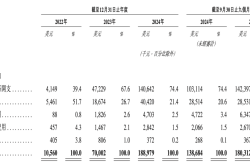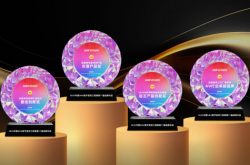Lei Jun Returns to Spotlight: Xiaomi Rockets 100 Spots in Fortune Global 500 Rankings
![]() 07/30 2025
07/30 2025
![]() 594
594

Written by Xiaolin
Art Design by Yang Lingxiao
Produced by Electric New Species
Core Summary
On July 29, 2025, the Fortune Global 500 list was unveiled, with Xiaomi Group making a stunning debut at position 297.
Remarkably, Xiaomi's ranking soared 100 places, jumping from 397th last year to 297th, marking the company's largest climb since its 2019 debut on the list.
* Above is the core content. If you prefer to skip the detailed analysis, feel free to leave a comment.
This remarkable leap not only set a new high for Xiaomi but also sent shockwaves through the global tech industry.
Lei Jun, unable to contain his excitement, tweeted, "Thank you to every user for your support. This is one of Xiaomi's most significant milestones in its 15-year history."

However, few are aware that behind Xiaomi's 100-spot surge lies Lei Jun's meticulously crafted strategic plan, years in the making.
01 Lei Jun's Ecological Vision
Lei Jun once declared, "I aim to turn Xiaomi into a true ecological company within a decade." At the time, many dismissed it as a mere aspiration, given Xiaomi's primary focus on hardware, particularly smartphones.
Yet, in 2024, Lei Jun's vision became a reality. Xiaomi's "people-car-home full ecology" strategy closed the loop, fueling the company's 100-spot leap in the Fortune Global 500 rankings.
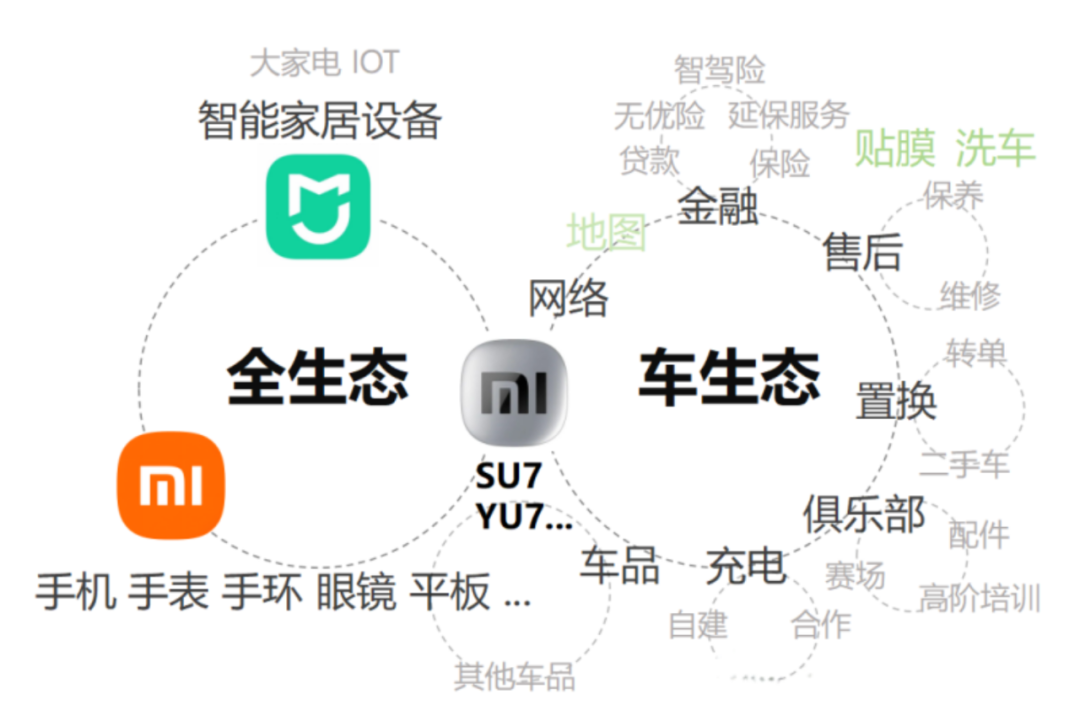
The power of this ecosystem is undeniable. Xiaomi's 2024 revenue hit RMB365.9 billion, a 35% year-on-year surge, marking its strongest performance ever. This revenue is no longer reliant on a single business but stems from the synergy of smartphones, automobiles, and major home appliances.
This diversified revenue structure aligns perfectly with the Fortune Global 500's emphasis on risk resilience and sustainable development potential.
The success of Lei Jun's ecological vision hinges on his profound understanding of "connectivity." Unlike traditional companies that merely stack products, Xiaomi leverages software platforms like MIUI, Mijia APP, and Xiaoai Assistant to integrate seemingly independent hardware into a cohesive whole. Xiaomi smartphone users are seamlessly guided towards purchasing Xiaomi cars and home appliances, fostering a strong ecological loyalty.
This ecological synergy maximizes Xiaomi's user value and significantly enhances its profitability.
02 Xiaomi's Three Pillars in Harmony
If the ecosystem is Lei Jun's strategic framework, then smartphones, automobiles, and major home appliances form the three pillars supporting Xiaomi's 100-spot leap in the Fortune Global 500 rankings.
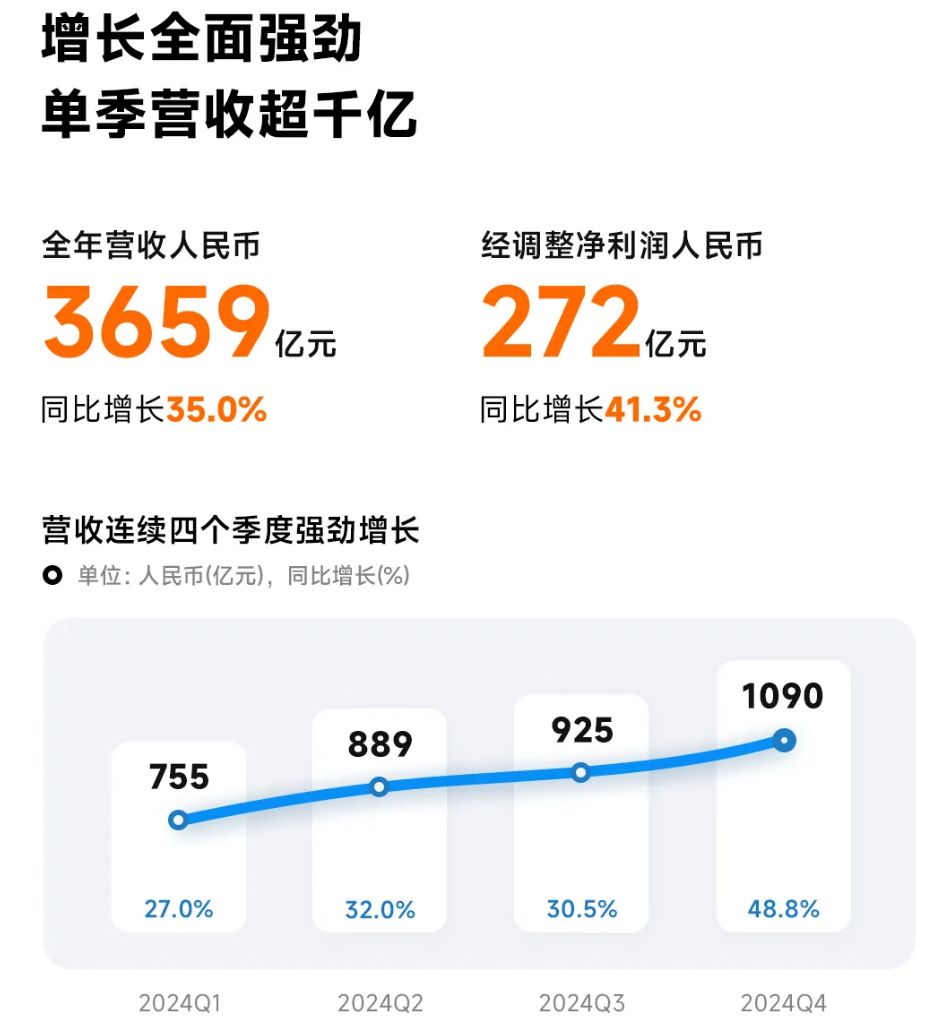
Smartphone Business: A King's Triumphant Return
In 2024, Xiaomi's smartphone business revenue reached RMB191.8 billion, with global shipments hitting 169 million units, a 15.7% year-on-year increase. These figures signify Xiaomi's substantial contribution to the global smartphone market's growth.
More astonishingly, Xiaomi reclaimed dominance in the Chinese market. In the first and second quarters of 2025, Xiaomi smartphones topped the activation charts in China for two consecutive quarters, marking Xiaomi's first return to domestic peak status in years.
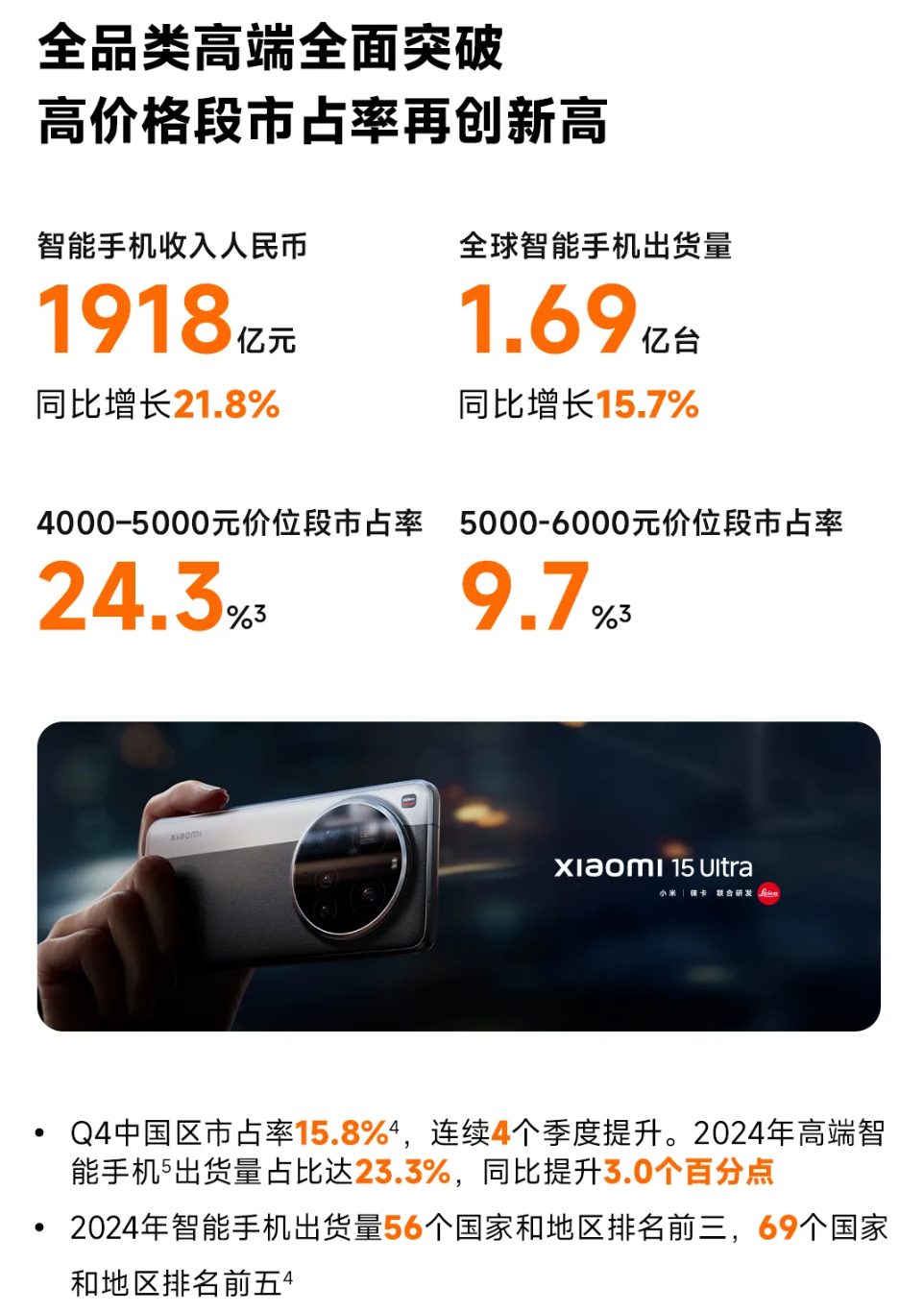
Automobile Business: The Dark Horse of New Forces
If smartphones are Xiaomi's foundation, then automobiles are its surprise package.
Within nine months of its launch, the Xiaomi SU7 delivered 136,854 vehicles, setting a delivery record in the new-energy vehicle industry. Even more remarkable, Xiaomi surpassed 300,000 total vehicle deliveries in July 2025, achieving this feat in just 15 months and setting a new benchmark for delivery speed among new-energy vehicle companies.
With revenue of RMB32.8 billion, the automobile business, though not a significant portion of Xiaomi's total revenue, carries significant symbolic weight. It proves Xiaomi's rapid rise capability in new sectors, a core competency of Fortune Global 500 companies.
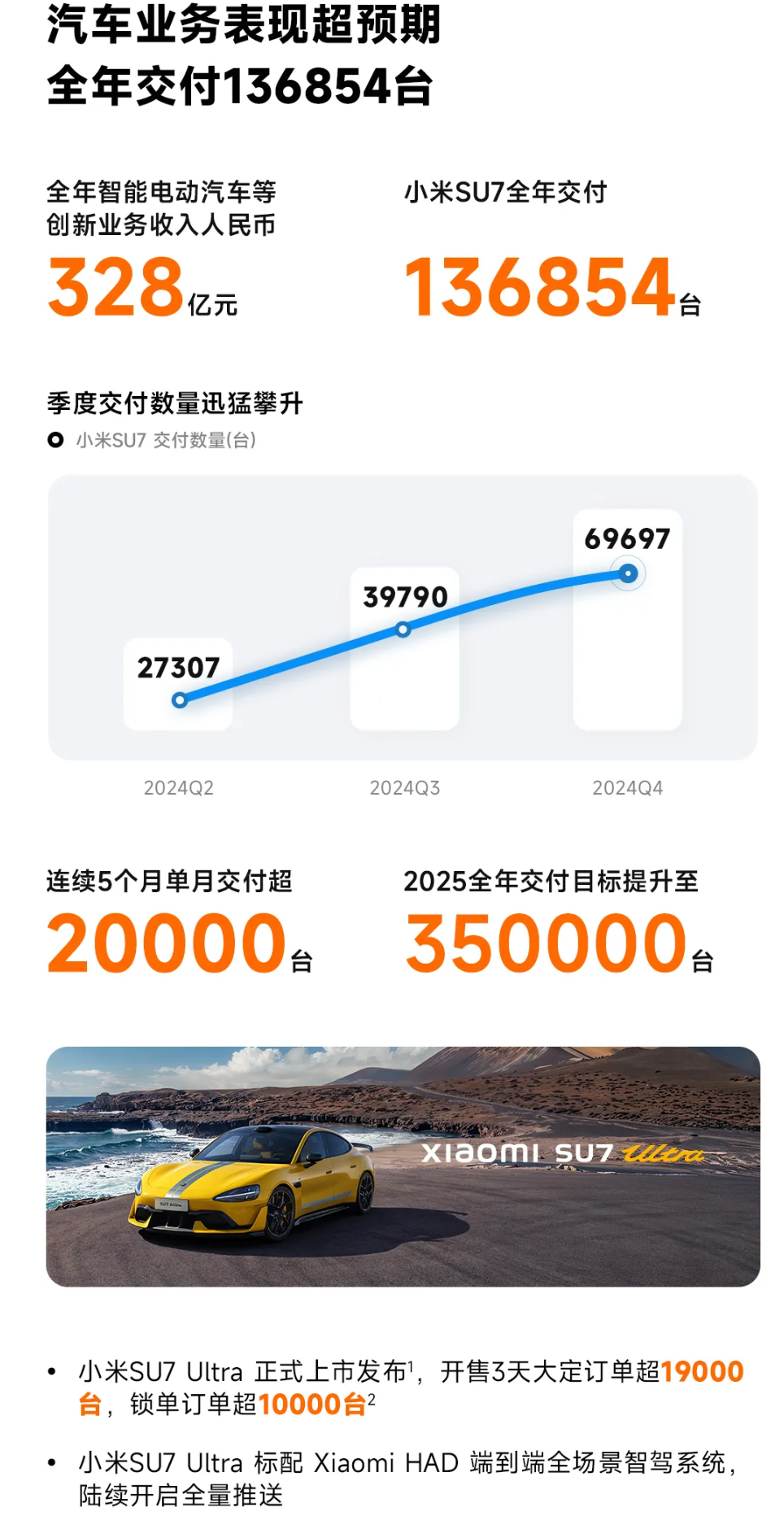
Major Home Appliance Business: The Overlooked Growth Engine
Often overlooked by outsiders, Xiaomi's major home appliance sector is its most stable growth driver.
Revenue from the IoT and consumer products business reached RMB104.1 billion, a 30% year-on-year increase. Shipments of air conditioners, refrigerators, and washing machines all hit record highs, reflecting Xiaomi's deep penetration into the traditional home appliance market.
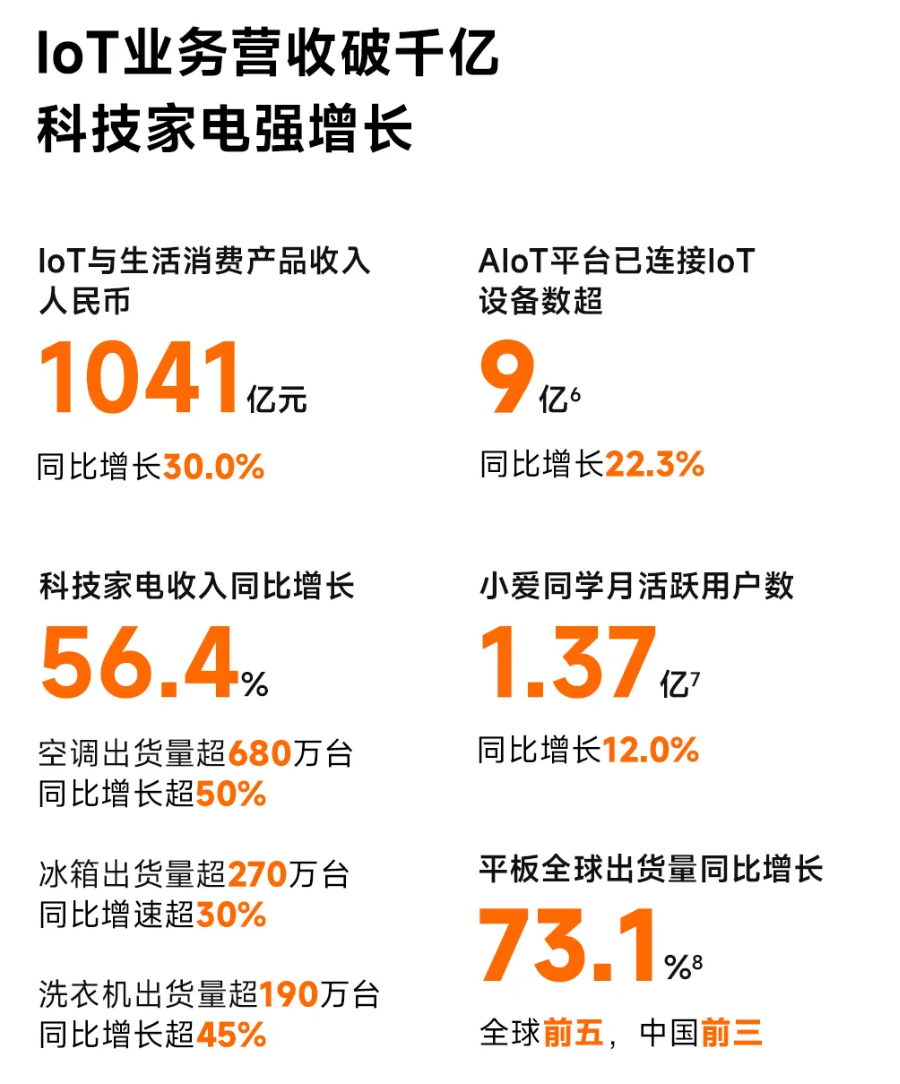
The synergy of these three pillars is Xiaomi's true strength. Smartphone users are more likely to trust Xiaomi cars, and car owners are more inclined to choose Xiaomi home appliances. This cross-category transfer of brand trust significantly reduces customer acquisition costs and maximizes each user's lifetime value.
03 Billion-Dollar R&D Investment Ushers in an Era of Innovation
Many focus on Xiaomi's 100-spot leap in the Fortune Global 500 rankings but overlook the fundamental driver: a qualitative leap in technological prowess.
Over the past five years, Xiaomi's cumulative R&D investment has exceeded RMB102 billion, ranking among the top in Chinese tech enterprises and surpassing many traditional giants. More importantly, these investments are now bearing fruit.
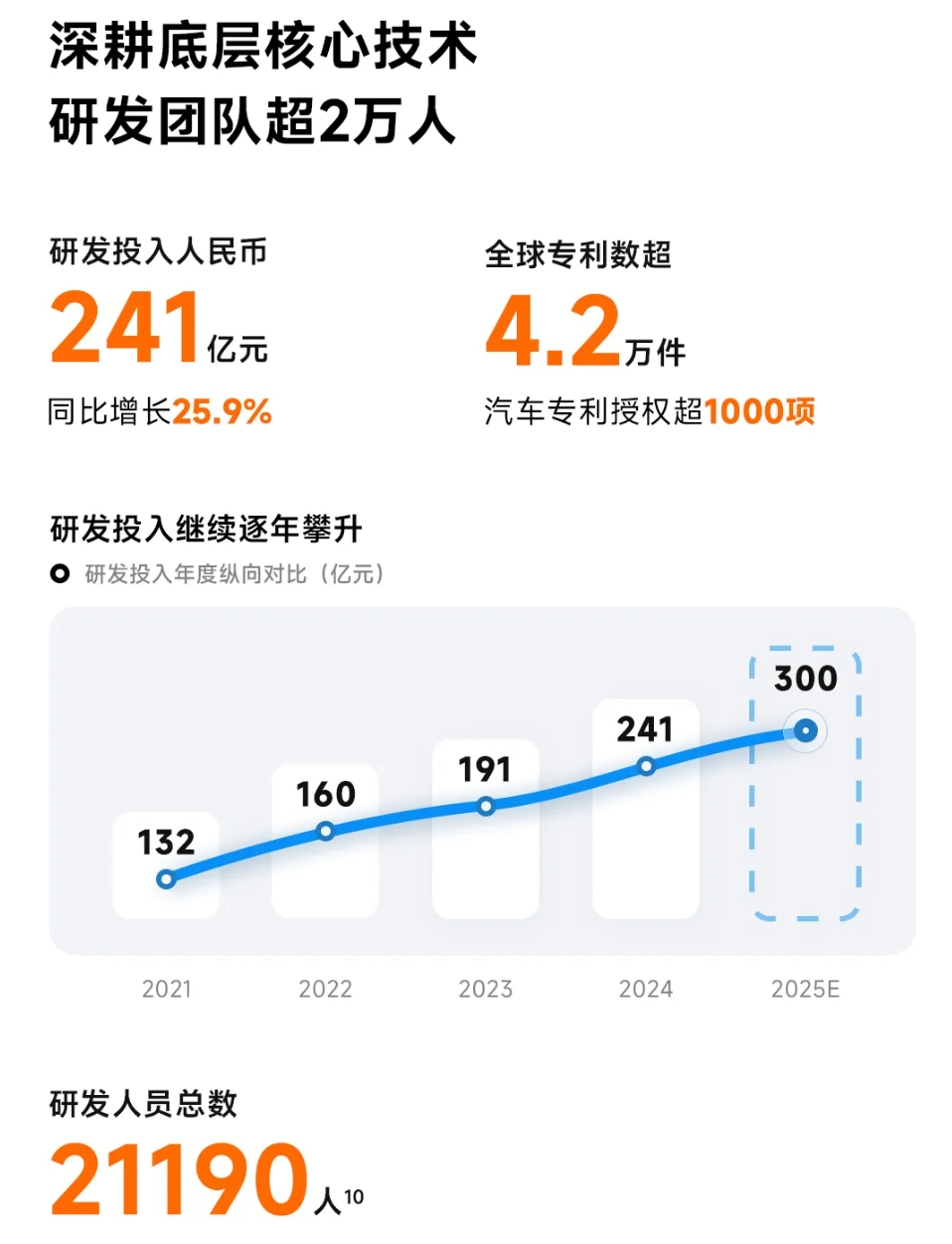
In May 2025, Xiaomi unveiled its self-developed flagship SoC, "Peng Pai O1," becoming the first mainland Chinese company and the fourth globally to independently develop a 3nm flagship chip. This breakthrough shatters the high-end chip monopoly, giving Xiaomi a strong voice in core technologies.
Even more impressive is Xiaomi's automotive technology breakthrough.
The Xiaomi SU7 Ultra production car completed the Nürburgring track in 7 minutes, 4 seconds, and 957 milliseconds, becoming the fastest mass-produced electric vehicle there. The SU7 Ultra prototype car even ranked third on the Nürburgring's official lap time chart with a time of 6 minutes, 22 seconds, and 91 milliseconds.
These achievements not only showcase Xiaomi's technological prowess but also serve as the best testament to its brand value.
Lei Jun's R&D philosophy is unique. While most companies engage in follow-up innovation, Xiaomi pursues disruptive innovation. From the Peng Pai chip to automotive "three-electric" technology, Xiaomi tackles the toughest challenges.
Though risky, this strategy, once successful, yields significant competitive advantages. Xiaomi's 100-spot leap in the Fortune Global 500 rankings is the best evidence of this R&D strategy's success.
Summary: What Other Aces Does Lei Jun Have Up His Sleeve?
Xiaomi's 100-spot leap in the Fortune Global 500 rankings is just the beginning, and Lei Jun has many more surprises in store.
The first card: The full-scale eruption of the AI ecosystem.
Lei Jun has revealed that Xiaomi is building full-stack AI capabilities, from chips to algorithms and from hardware to software. Once this AI ecosystem matures, Xiaomi's product experience will undergo a revolutionary upgrade.
The second card: Deep exploration of overseas markets.
Currently, Xiaomi's overseas revenue accounts for about 40%, but there's still immense growth potential in many developed markets. With the overseas launch of high-end products like Xiaomi cars, Xiaomi's globalization will enter a new phase.
The third card: Vertical integration of the industrial chain.
Lei Jun is steering Xiaomi's transformation from an asset-light to an asset-heavy model, enhancing control over the industrial chain through self-built factories and supplier acquisitions. This will significantly boost Xiaomi's profitability and risk resilience.
In 2025, Lei Jun set a growth target of over 30% for Xiaomi. At this pace, Xiaomi is poised to climb further up the Fortune Global 500 list next year.
Xiaomi's 100-spot leap in the Fortune Global 500 rankings is not just a victory for one company but also a testament to China's technological innovation capabilities.
Amid global economic uncertainty, Xiaomi has proven that Chinese enterprises, through innovation and breakthroughs, can secure a place on the world stage.
Lei Jun and his Xiaomi are penning a legendary chapter in the story of Chinese tech enterprises.

